#Pontiac
QOTD: Which Car Comes to Mind When You Think Muscle?
Over the long holiday weekend I had a conversation about muscle cars from the late '60s/early '70s -- and also saw a bunch of them being posted on the Twitter/X account of a famous performance-car builder.
I enjoyed seeing the Camaros and Chevelle SSs and whatever else. It helped put a smile on my face after the weird year that was 2023. When gazing at a particularly lovely restored Chevelle SS, I thought to myself "man that's what a '60s/'70s muscle car looks like."
Then I realized there were several models that could be the primary representative of that era.
Americans Miss Pontiac More Than Any Other Defunct Car Brand
Like all industries, the automotive world has seen tons of change over the last several decades, and an unfortunate side effect of the evolutionary process has been the closure of several once-popular car brands. Here in the U.S., car nerds mourn the loss of brands like Saab, but it might be surprising to learn the brands that enthusiasts in other countries pine over.
Junkyard Find: 1988 Pontiac Sunbird SE Coupe
Even by the standards of the far-flung General Motors Empire, the J-Body was found everywhere, from the Vauxhall Cavaliers of Great Britain to the Isuzu Askas of Japan to the Daewoo Esperas of South Korea. In the United States of the 1980s, the Chevy Cavalier was the J-Body King, but its Pontiac-badged sibling, the Sunbird, was a not-so-distant second place in the J sales race. Today's Junkyard Find is a sporty Sunbird coupe, found in a yard just south of Denver, Colorado.
QOTD: Missing Brands
Today's UCOTD got me thinking -- what now-dead '90s brands do you miss?
Junkyard Find: 1976 Pontiac Grand Prix LJ
From the time John DeLorean and his Pontiac co-conspirators created the 1962 Grand Prix until the very last W-Body Grand Prix appeared a couple of years before Pontiac's demise, millions of North American car shoppers eagerly purchased the affordable sportiness of the Grand Prix. Today's Junkyard Find is an example from the very pinnacle of Grand Prix sales, found in pretty decent condition in a Colorado self-service wrecking yard.
Junkyard Find: 2004 Pontiac Aztek
When the Pontiac Aztek concept SUV was unveiled in 1999, it was a bit odd-looking but no more so than the Isuzu VehiCROSS. It looked angular, low, and menacing, which is just how plenty of Americans wanted their truckish vehicles. When the production Aztek appeared as a 2001 model, however, some changes had been made.
Decades-Old Grudge Leads to Torched Cars at Indiana Dealership
We've heard of holding grudges, but what happened at an Indiana car dealership recently has set our minds on fire.
TTAC Throwback: Here's Why You Should Buy This 1980 Pontiac Firebird "Yellowbird"
GM’s pony cars, the Chevrolet Camaro and Pontiac Firebird, received a thorough redesign for their second generation, which debuted in 1970. The Coke-bottle styling of the first-generation cars gave way to a sleek coupe with a long hood and taut fastback rear. The shape was balanced and restrained (at first), showing a decided European influence. The redesign would prove long-lived, remaining in production until 1981.
Rare Rides Icons: The History of Stutz, Stop and Go Fast (Part XVII)
We’re back again with more Stutz history, and our coverage of the bric-a-brac produced by the Stutz Neoclassical company as complementary offerings to two-doors like the Blackhawk, Bearcat, and Bearcat II. In our last entry, we covered the Duplex, a sedan that (unsuccessfully) wore Blackhawk styling. Based either on a Pontiac or a Cadillac, the Duplex was the ultimate production version of the Ministeriale prototype sedan built by Carrozzeria Padane.
With an astronomical ask of $32,500 ($251,312 adj.) circa 1970 and styling that hadn’t translated well into a sedan, the Duplex was a non-starter. Just one was ever made, and it was sold to a criminal in Utah. But that didn’t deter CEO James O’Donnell, who was insistent a Stutz sedan was viable. A few years later there was another Stutz sedan presented: IV-Porte.
Rare Rides Icons: The History of Stutz, Stop and Go Fast (Part XVI)
We return to our long-running Stutz historical coverage today, with a few of the odds and ends vehicles that were never the headliners of Stutz’s brand portfolio. During the Seventies and Eighties, the Blackhawk and targa roof Bearcat funded some other fun ideas that occupied the thoughts of company CEO James O’Donnell.
In our last entry, we covered what was perhaps the strangest offering of the latter Stutz entity, a C/K era Suburban that concealed a mounted machine gun in its interior. The armored SUV was subsequently turned into a gun-free dictatorial parade sedan with targa roof, and a trunk. The be-trunked Suburban also donated its shape to an upright regular sedan and six-door funeral transport.
And while the Stutz Suburban takes were intended for foreign heads of state for security and coup d’etat purposes, the Stutz sedans were directed at the company’s more traditional American customer: Someone who feared no peasant uprising but did enjoy flashy styling and lots of elegance. Introducing the Duplex.
Rare Rides Icons: The History of Stutz, Stop and Go Fast (Part XV)
Last time in our tale of Stutz the company finally realized its dream of a true convertible, the Bearcat II. The original product dream of CEO James O’Donnell, the Bearcat II went on sale in 1987. Though the company’s fate was pretty much sealed by that time, Stutz had its heyday of models circa the early Eighties. Spoilers: Machine guns were involved.
Rare Rides Icons: The History of Stutz, Stop and Go Fast (Part XIV)
We return to our coverage of the reborn and neoclassically-focused Stutz Motor Company today, at a point of considerable change in the company’s model portfolio. “Portfolio” may be a bit generous, but for a few years the company did produce a handful of different models.
Since Stutz was relaunched in 1970 its main offering was the Blackhawk coupe, in both its original 1969 Pontiac Grand Prix basis and downsized B-body Pontiac Bonneville basis. But Stutz CEO James O’Donnell always wanted a true convertible in the Stutz lineup. That wish was finally realized with the Bearcat II.
Rare Rides Icons: The History of Stutz, Stop and Go Fast (Part XIII)
We pick up the Stutz story once again today after we reached the conclusion of the neoclassical Blackhawk coupe’s life in 1985. The coupe that sold so well in the Seventies with its exaggerated Exner styling was watered down considerably in the Eighties when it switched from its original 1969 Pontiac Grand Prix roots to those of a 1980 two-door Pontiac Bonneville.
However, even though the Blackhawk was the headline and best-known product from the Stutz neoclassical company, it was not the only car in the portfolio. First up: the Bearcat.
Rare Rides Icons: The History of Stutz, Stop and Go Fast (Part XII)
In our last entry in the Stutz saga, we covered the final few years of the Blackhawk that originated in 1971. Through various trim transformations and minor updates, the ’71 lived all the way through the 1979 model year. That final year it was also transformed into the very rare Bearcat targa convertible. But the winds of change were blowing: Detroit downsizing was already well underway, and Stutz was out of 1969 Pontiac Grand Prix platforms to use. The incredibly expensive Blackhawk sold roughly 350 examples in its first generation.
Because of domestic market downsizing, the contemporary G-body Grand Prix of 1980 wasn’t large enough for Blackhawk purposes. Instead, Stutz turned to the B-body platform, and specifically the Pontiac Bonneville’s two-door variant. And though it was marketed as a coupe by GM, the roofline was so formal your author would file it as a two-door sedan. In any event, the new hardpoints of the Bonneville meant considerable visual changes on the 1980 Blackhawk coupe.



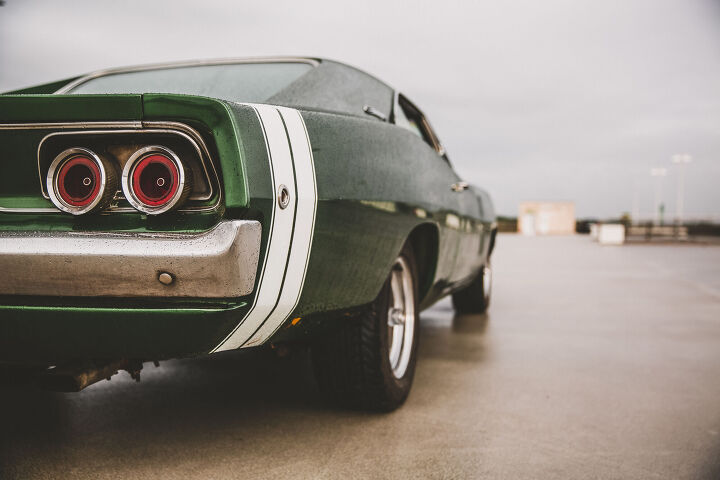
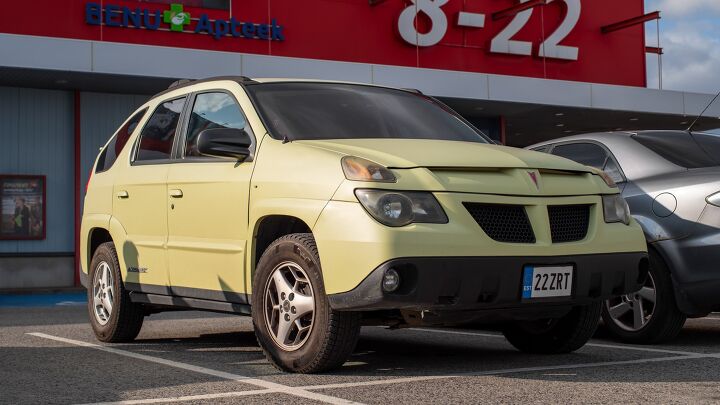
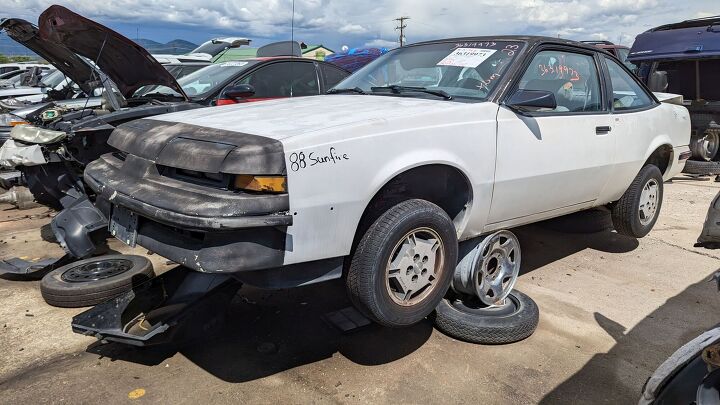
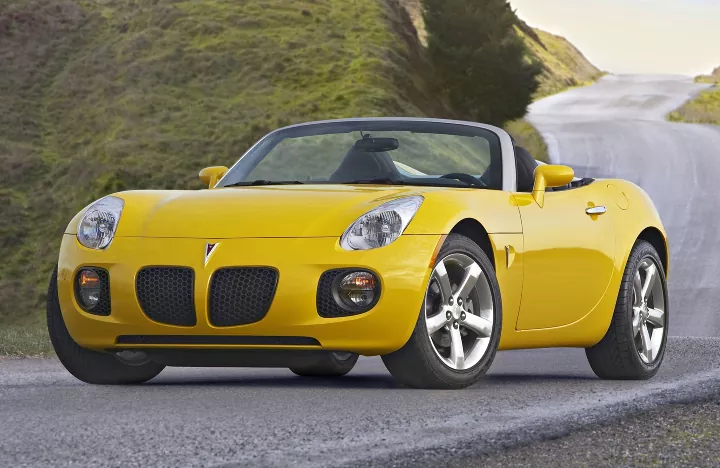
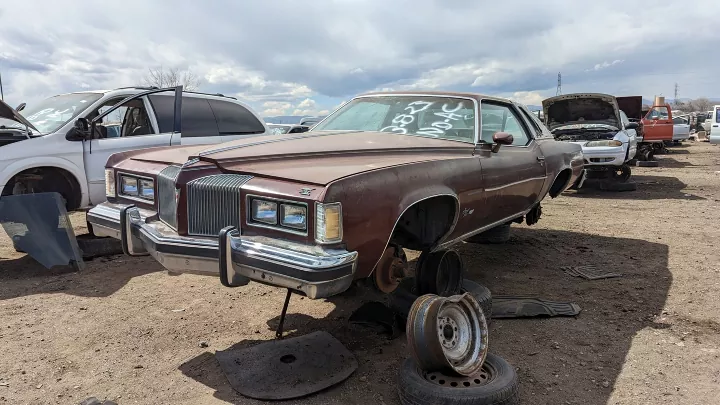
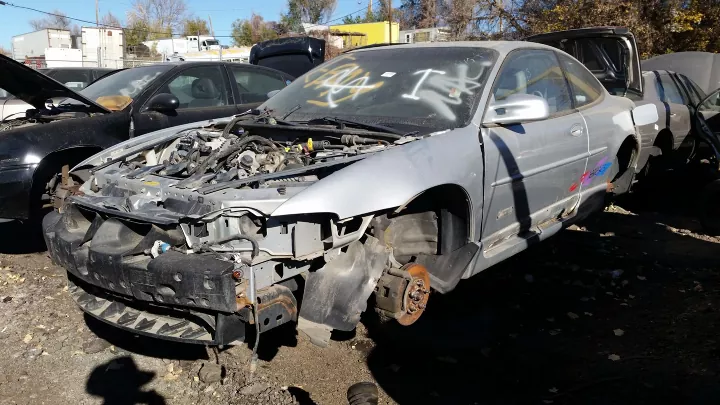


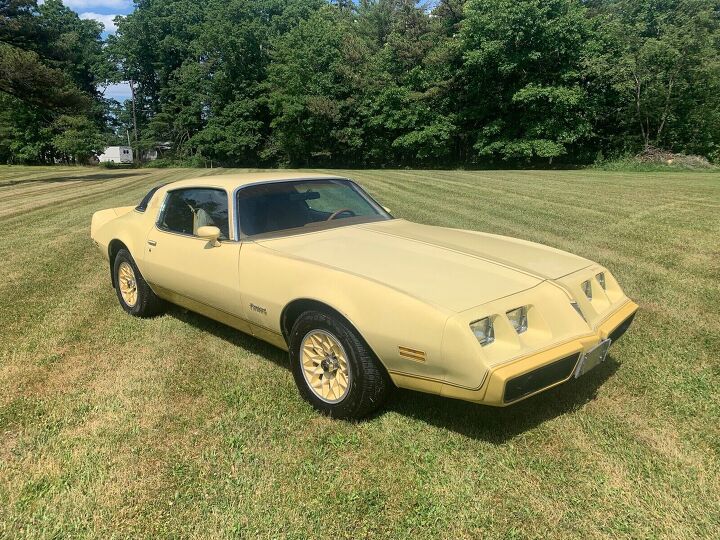
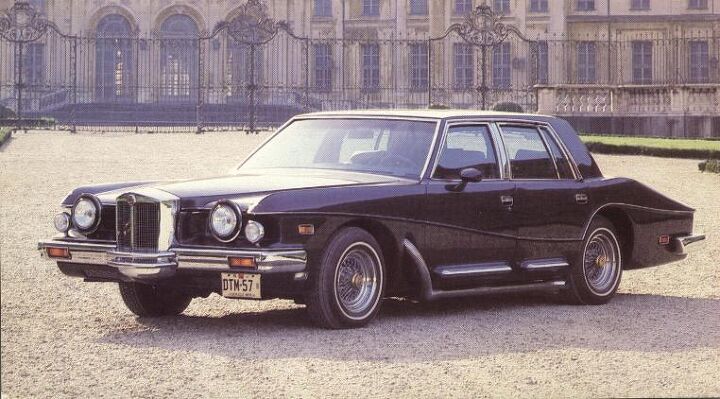
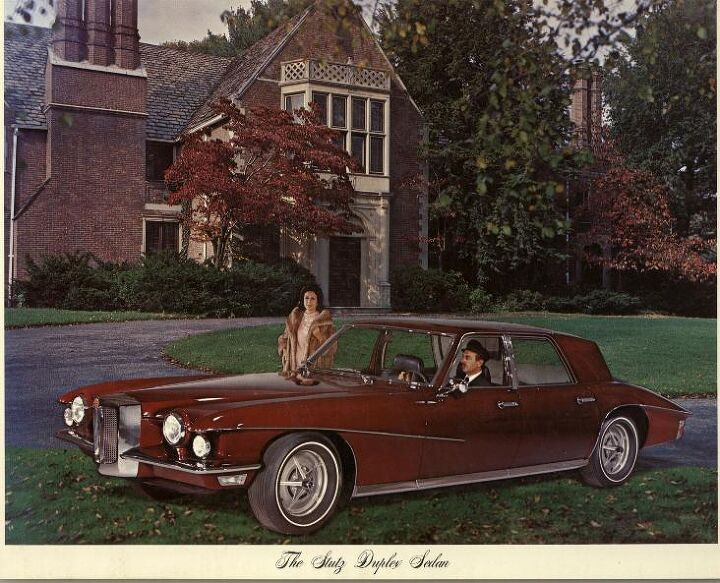
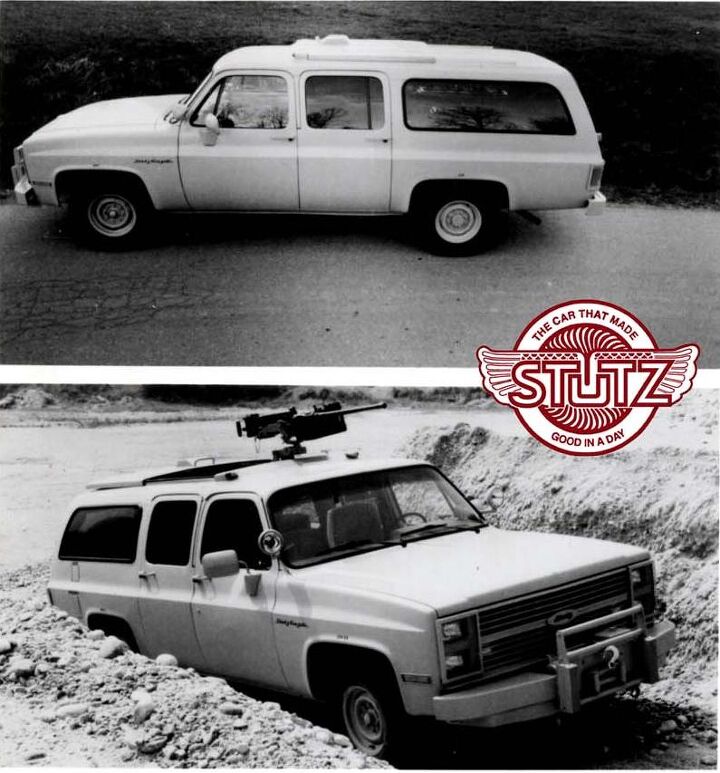
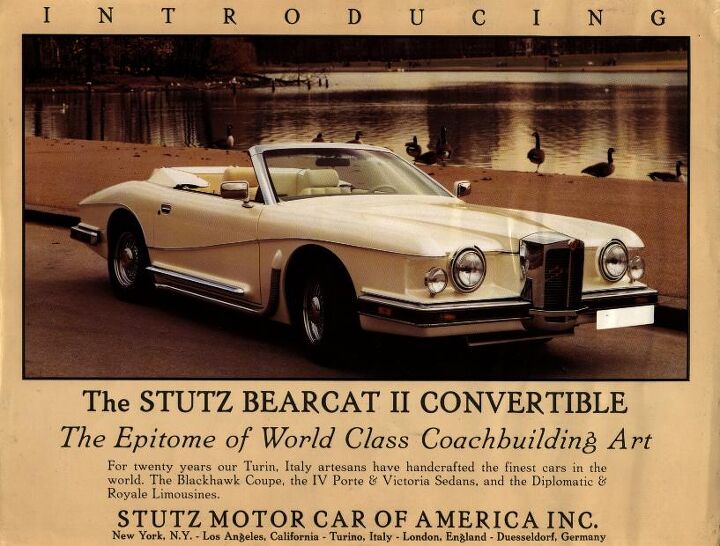
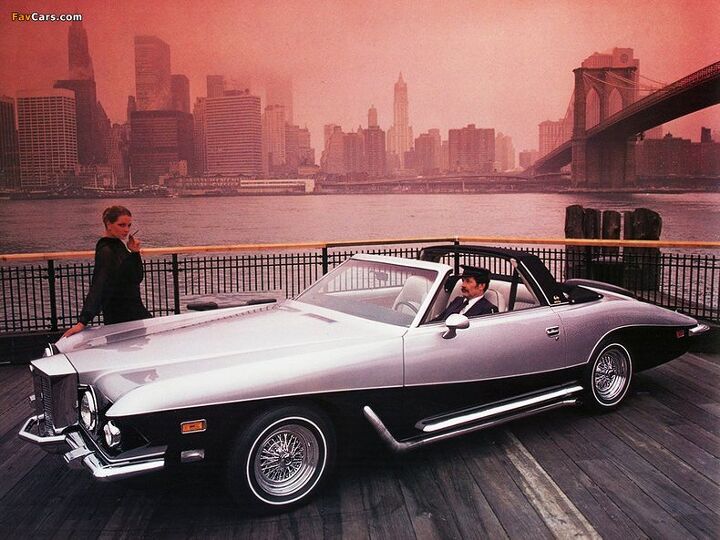
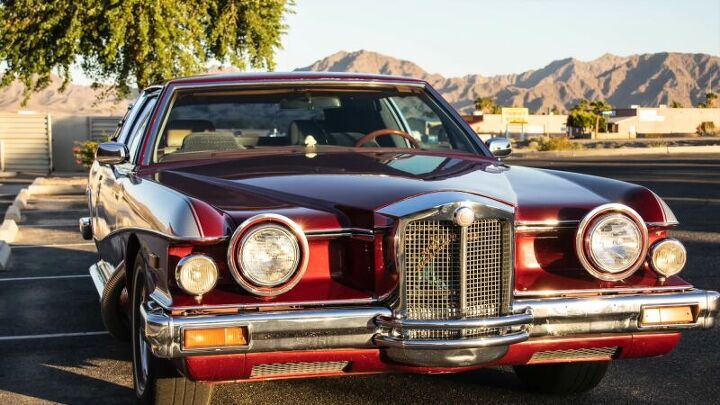












Recent Comments